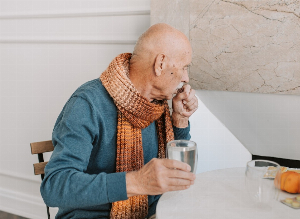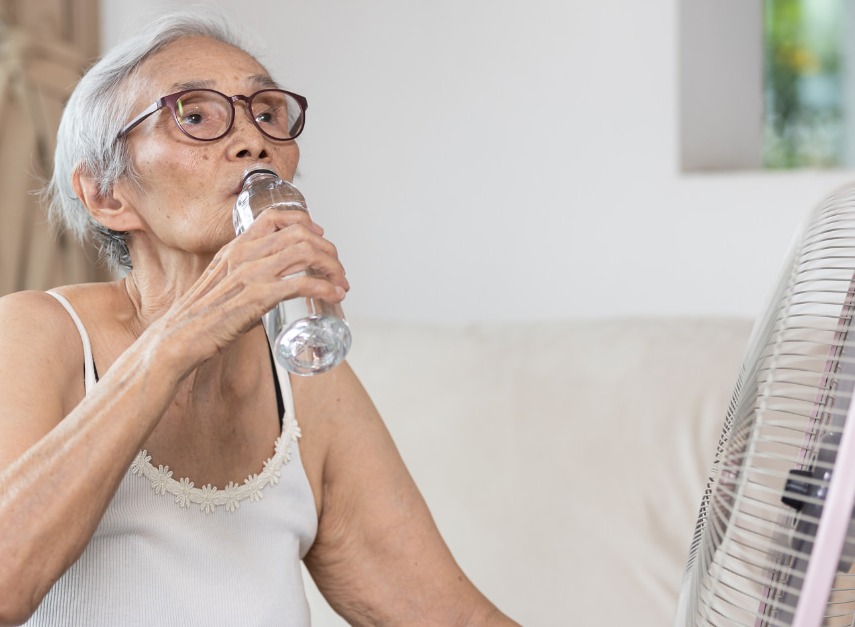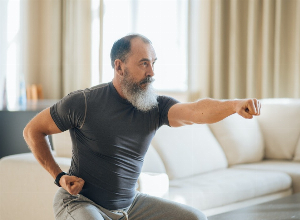COPD: how can you manage it better?
Published Dec 5, 2022 • By Claudia Lima
Chronic obstructive pulmonary disease, or COPD, is responsible for a progressive obstruction of the bronchial tubes.
It is a widespread disease affecting about 5% of the US population.
To improve management and ensure treatment effectiveness, regular follow-up care must be established.
What does it consist of? When should it be carried out?
Read our article to find out!

COPD: what is it?
Chronic obstructive pulmonary disease, or COPD is a chronic respiratory disease characterized by progressive airway obstruction.
The main cause of COPD is smoking, so it is more common among smokers. However, there are other causes of COPD, such as passive smoking, pollution, occupational exposure to toxic substances, genetics and also the consequences of certain diseases; so non-smokers can also be affected.
COPD is a common disease, affecting more than 12 million people in the US, but it is estimated there are also millions of people who are unaware they have it.
There are several things that people with COPD can do to improve their general condition, to make it easier for them to control their disease and to live with it better.
The first step in treating COPD is to stop smoking and reduce exposure to other people's smoke; to exercise regularly, and get vaccinations for pneumonia, influenza and Covid-19.
With proper management, lung function decline and the progression of COPD can be slowed down. If left untreated, the disease will worsen, so regular monitoring is essential.
How can COPD be managed?
COPD follow-up care is carried out by the attending physician, in coordination with a multidisciplinary care team composed, among others, of a pulmonologist, a tobaccologist, a cardiologist, a physiotherapist, a dietician and a psychologist, but also a dentist, a pharmacist, a social worker and an oxygen service provider.
The aims of COPD care are:
- To improve the symptoms of the disease on a daily basis,
- To ensure that appropriate level of physical activity is maintained,
- To limit the number of emergency care cases.
This requires adherence to treatment, understanding the importance of medical visits and check-ups, and knowing how to manage emergency situations.
Understanding your treatment and adhering to it
In order to adhere to one's treatment and therefore to allow it to be as effective as possible, it is important to understand how it works. You should not hesitate to ask your doctor about therapeutic patient education programs (TPE).
TPE is intended for COPD patients and their families, but also for those who suffer with asthma or chronic respiratory failure. Participation in the program is voluntary. The topics covered include understanding the disease, its treatment, management of exacerbations or attacks and aggravating factors, physical activity, nutrition and self-management.
Having regular medical visits and tests
Depending on the stage of COPD (from I to IV), the frequency of medical visits differs:
- Stage I to II (mild or moderate COPD): a general practitioner should be seen once or twice a year and an opinion from a pulmonologist is also required,
- Stage III and IV without oxygen therapy (severe or very severe COPD): a GP should be seen every 3 months and a pulmonologist once a year,
- Stage IV with home oxygen (severe or very severe COPD with oxygen and/or non-invasive ventilation (NIV): a GP should be seen every month and a pulmonologist twice a year.
In case of co-morbidities, the patient's smoking and therapeutic patient education (TPE) program, these visits will be more frequent.
During these visits, such examinations as PFTs (pulmonary function tests such as spirometry), blood gas measurements, a chest X-ray and a cytobacteriological examination of sputum may be prescribed. The doctor will also check the patient's weight.
For any medical visit not related to COPD follow-up, both the disease and the treatment should me mentioned by the patient to the healthcare professional.
In case of exacerbations and depending on the case (severity, co-morbidity, oxygen therapy and personal situation), a patient can be referred to hospital. Within a week of discharge, the patient should be seen by their GP and pulmonologist and rehabilitation care should be initiated within 90 days.
Notifying your doctor and emergency services in case of a problem
If you experience any unusual and worrying symptoms, you should immediately inform your GP. They should also be notified of any side effects of the treatments. Once your doctor or the emergency services are informed, they will be able to judge whether the care you need is urgent or not.
The signs to watch out for are:
- Shortness of breath,
- Breathing difficulty, wheezing,
- Cyanotic lips, fast heartbeat,
- A more intense cough, accompanied by sputum,
- Blood in the sputum (hemoptysis),
- Swelling of the legs,
- Fever,
- Ineffective treatment.
In case of rapid deterioration of the condition and/or pain in the chest, call 911 directly.
In addition to this follow-up care plan and change of habits such as stopping smoking and taking up an appropriate sport, it is strongly recommended that people affected with COPD should be accompanied by a psychologist, an occupational health service, as well as by patient associations or support groups (online and offline) and social structures.
Give it a "Like" and share your thoughts and questions with the community in the comments below!
Take care!
Sources :
Bronchopneumopathie chronique obstructive (BPCO), OMS, who.int/fr
BPCO et causes fréquentes, tabagisme et expositions professionnelles, has-sante.fr
Vivre avec une BPCO, ameli.fr
ETP pour les patients atteints de BPCO, chu-lyon.fr
BPCO : 3 outils pour améliorer le parcours de spins des patients, has-sante.fr
Leaflet BPCO, has-sante.fr
Carnet de suivi BPCO, splf.fr

 Facebook
Facebook Twitter
Twitter



